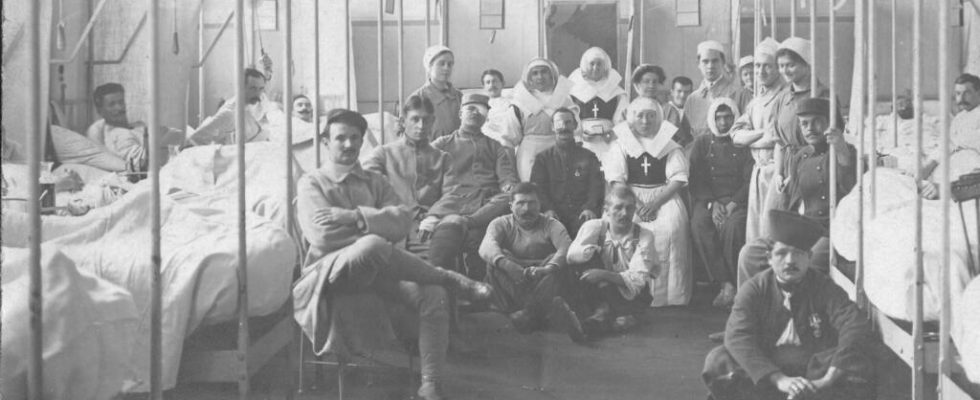Allowing those disabled from the Great War to resume an active part in the life of the nation in times of peace, such was the challenge of a founding law for the French policy of integration through economic activity of the disabled.
4 mins
Between 1914 and 1918, the war took on an industrial character. One in six French soldiers is killed in combat, one in three is wounded. More than 600,000 men returned disabled – this figure does not take into account those traumatized by war, the number of whom remains unknown, due to lack of serious diagnosis and recognition from the civil or military authorities.
The scale of the disaster has major consequences on facial surgery and changes the way we view disability. It also raises many financial questions – with regard to widows, wards of the nation and the mutilated, to whom pensions should be awarded. The law of March 31, 1919 provides for these three categories. The disability pension is calculated based on grade and difficulty finding employment.
Read alsoMoussy-le-Vieux, the mirrorless castle of Broken Mouths
From repair to reintegration
However, given the number of pensioners, the question also arises of their reintegration into civilian life. From April 1916, a law reserved jobs for war veterans in the administration. In January 1918, they were granted free access to vocational training centers. These measures are not enough.
As early as 1915, a bill was tabled by a socialist deputy to establish the compulsory employment of war veterans, on the basis of their physiological disability. In 1919, the radical socialist Albert Sarraut proposes another, this time taking into account the professional capacity of the people concerned. The first project pleases the Chamber of Deputies while the second, more conservative, is favored by the Senate.
It was a hybridization of the two projects which was finally adopted on April 26, 1924 under pressure from a center-right government, eager to put an end to a subject which had occupied parliamentary debates for almost ten years. It provides for the hiring of 10% of war invalids for private companies with more than ten employees.
Constrain rather than encourage, at the cost of numerous exemptions
The percentage chosen is not the result of any in-depth statistical study and on the employers’ side they do not hesitate to challenge it by producing more or less serious figures, with the sole objective of reducing the burden.
Companies are given a two-year period to apply the law. Moreover, no job creation is planned for its implementation, which is supposed to be done as vacancies arise. The constraint is softened by means of a broad exemption system, providing for a fee for companies which have not reached their quota. This is actually a fine, but it is not high enough to be a deterrent.
Employers see this as a way for the State not only to transfer part of its responsibilities to the private sector, but also to finance the billion francs of the pensions budget through this tax. We also mention the choice made by Great Britain which, in a liberal logic, encourages companies to recruit war invalids, without affecting the freedom to hire.
A pioneering law but little respected
The fact remains that the law will never be firmly enforced. However, it will serve as a model for the disability policies of the second post-war period, with the recognition in 1957 of the status of disabled worker – without any further distinction on the origin of the disability, civil or military.
In 1975, two laws created the technical commissions for orientation and professional reclassification (COTOREP) and the allowance for disabled adults (AAH). Others will follow in 1987 and 2005, without however ensuring the full reintegration through work of disabled people.
In 2022, only 38% of them were employed, a percentage almost half that of the entire population. They represented 7.1% of people of working age but only 4% of people in employment. Across the European Union, the gap is smaller – 51% of disabled people in employment compared to 71% of the general population.
THE European Council has also been very harsh with France regarding its results in terms of disability. Other countries have followed the British model, favoring a rights-based approach based on non-discrimination and equal opportunities, with convincing results, notably in Denmark and Italy. This is also the strategy chosen for the 2020 decade by the European Commission.
Our selection on the subject
